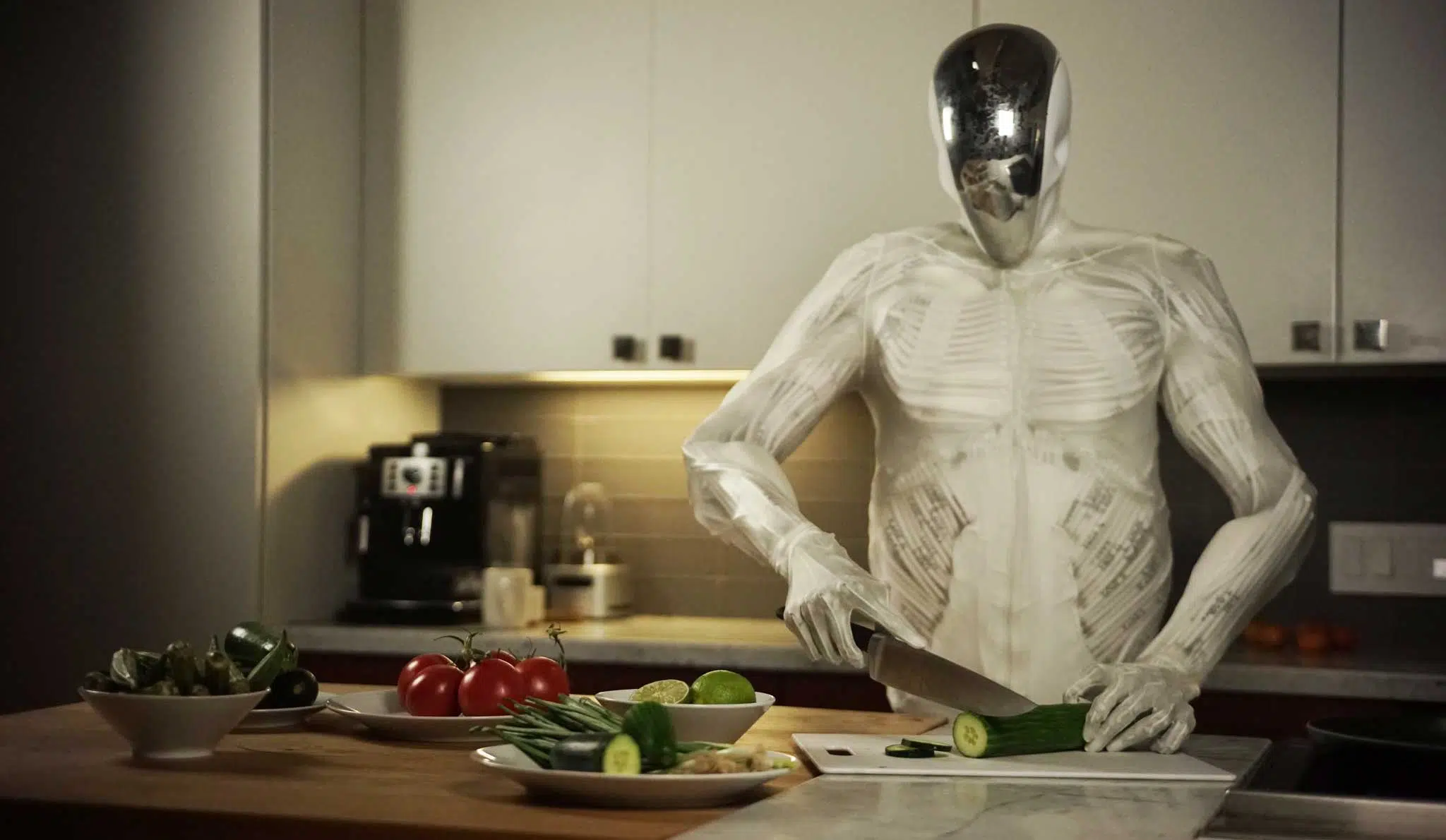Protoclone is the latest humanoid robot from Clone Robotics, and it’s unlike anything the robotics world has seen before. Designed with human-like bones, synthetic muscles, and advanced sensory capabilities, Protoclone represents a massive leap toward lifelike robotic assistants for everyday use.
Unveiled via a viral video on X (formerly Twitter), Protoclone has already attracted global attention for its creepily human-like movements and biologically accurate design. The company claims Protoclone is the world’s first bipedal musculoskeletal android, featuring 206 bones and over 1,000 artificial muscle fibers. With applications ranging from home assistance to industrial support, Protoclone is positioning itself as the future of human-robot interaction.
What Is Protoclone?
Protoclone is a next-generation humanoid robot engineered to mimic the structure, motion, and sensory perception of the human body. Created by Clone Robotics, this android stands apart from existing robots due to its internal architecture modeled after the human musculoskeletal system.
At its core, Protoclone is a biomimetic android built for realism. From its 206 polymer bones to its Myofiber synthetic muscles, everything is designed for human-level articulation. Unlike servo-driven robots, Protoclone uses pneumatic systems for more fluid, organic movements—and it’s only getting better, with a planned upgrade to hydraulic actuation.
Viral Debut and Public Reaction
On February 19, Clone Robotics posted a video of Protoclone in action. Suspended from the ceiling, the robot’s limbs twitch and stretch with remarkable natural motion. The video, which has received over 430,000 views, sent shockwaves through both tech communities and general audiences, drawing comparisons to science fiction androids.
Tech enthusiasts and robotics experts alike described the display as both amazing and unsettling—a hallmark of highly realistic humanoid robots.
Biological Design: Bones and Myofibers
What makes Protoclone special isn’t just how it moves, but why it moves that way.
-
✅ 206 synthetic bones modeled after the human skeleton
-
✅ Over 1,000 artificial muscle fibers (Myofibers)
-
✅ Joint structures that mimic human flexibility
-
✅ Made with flexible polymers rather than rigid metal
This biomimetic architecture gives Protoclone an unprecedented range of motion, allowing it to perform actions closer to what a human can do. Unlike robots that look humanoid but move mechanically, Protoclone is organically dynamic.
Advanced Sensory Integration
To function in real-world environments, Protoclone is equipped with:
-
📷 4 high-resolution cameras for visual awareness
-
🧠 500 integrated sensors across its limbs and body
-
💡 A control system mimicking the human nervous and vascular systems
These features allow the robot to perceive, interpret, and respond to its surroundings, opening the door for truly autonomous interaction. Its control mechanism is not just about movement—it’s about intelligent adaptation.
Real-World Applications of Protoclone
Clone Robotics sees Protoclone as more than just a tech demo. The company envisions several practical applications, including:
-
🧹 Household assistance: Helping with chores, organizing, and caregiving
-
🏭 Industrial support: Working in factories, warehouses, and logistics
-
🏥 Healthcare assistance: Assisting the elderly or disabled
-
🛎️ Service industries: Hospitality, customer service, and retail
The robot’s naturalistic movements and sensory perception could make it a comfortable companion in environments where traditional robots often feel intrusive or inadequate.
Synthetic Muscles: How They Work
Protoclone’s movement is powered by Myofibers—Clone Robotics’ proprietary synthetic muscle technology. These artificial fibers contract and expand like real muscles, offering:
-
⚙️ Smooth, quiet motion
-
💪 Increased strength-to-weight ratio
-
🔁 Flexibility in motion patterns
Currently powered by compressed air (pneumatics), the next iteration of Protoclone will move to hydraulic power, providing more precise control and greater durability under load.
Preorders Coming Soon
Clone Robotics has announced that Protoclone will be available for preorder later this year, although pricing and delivery timelines have not yet been released. The preorder is expected to attract not only tech enthusiasts but also businesses, researchers, and institutions looking for the next step in robotics evolution.
Clone Robotics’ Vision and Track Record
Protoclone is the latest in a line of biomimetic innovations by Clone Robotics. The company previously developed:
-
🖐️ A robotic hand with tendon-driven motion
-
🧍 A humanoid torso with synthetic muscle articulation
Now, with Protoclone, Clone Robotics is integrating these modules into a full humanoid form capable of both mobility and interaction.
What Makes Protoclone Different?
| Feature | Protoclone | Other Robots (e.g. Atlas, Optimus) |
|---|---|---|
| Bones | 206 synthetic bones | Metal frame |
| Muscles | 1,000+ Myofibers | Motors & joints |
| Movement | Pneumatic (soon hydraulic) | Electric servos |
| Sensors | 500+ with 4 cameras | Limited sensors |
| Control System | Mimics human nervous system | Standard AI controllers |
| Look and Feel | Lifelike motion and build | Mechanical and rigid |
This table makes it clear: Protoclone is built to feel and behave like a living being, not just a machine.
Ethical and Social Considerations
As with any major leap in AI and robotics, Protoclone raises important questions:
-
🤖 How human should a robot look or behave?
-
📜 Will regulations need to catch up to new lifelike machines?
-
🧠 Should robots with such realism be given responsibilities that impact human well-being?
These issues will need careful consideration as Protoclone and similar technologies become part of everyday life.
Final Thoughts: Protoclone and the Future of Robotics
Protoclone isn’t just a robot—it’s a glimpse into what next-gen robotics will look like in homes, hospitals, factories, and public life. Clone Robotics has succeeded in designing not just a machine, but a robotic organism that could set the new standard for AI-human integration.
With preorders on the horizon and advancements underway, Protoclone is on track to become a defining symbol of robotic evolution in the 21st century.
www.yallatv.ae





